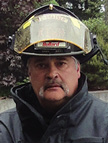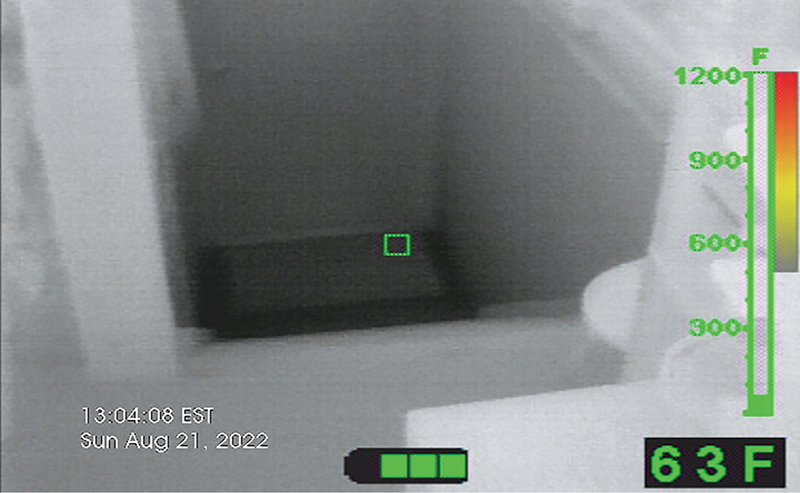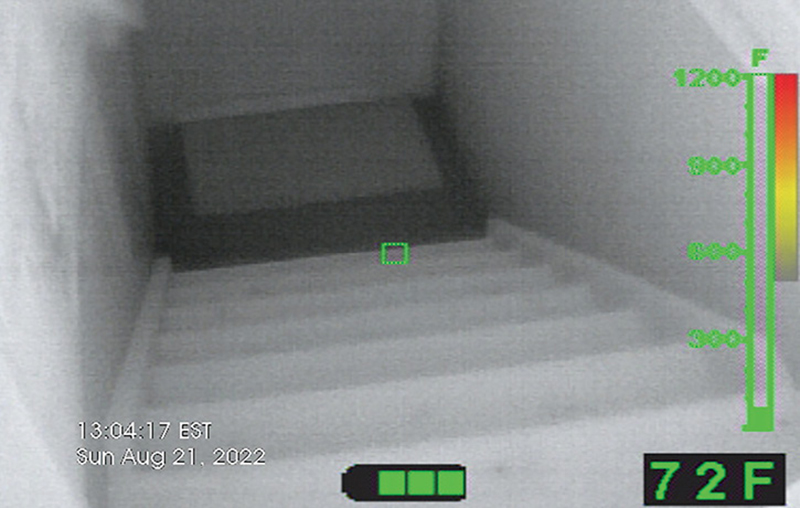Thermal Imaging Manfred Kihn
Training firefighters is one of the most rewarding aspects of my job. Today, our fire service is changing as we find ourselves responding more to medical emergencies than fighting fires. We continue to embrace technology, albeit cautiously, as we look for tools to help us perform our jobs more effectively and safely.

Improvements have been made to equipment including halligan bars and ladders. We are now equipping emergency medical technicians and paramedics with portable ultrasound devices and handheld portable blood analyzers. The fire service is even looking into virtual reality training.
Thermal imagers (TIs) have certainly come a long way as well—from the large, heavy models to ergonomically designed lighter models that attach to a firefighter’s turnout gear to imagers that are equipped in a firefighter’s self-contained breathing apparatus (SCBA) and SCBA face masks. With all these advances, we are a safer fire service.
My instincts as a firefighter come from years of fighting fires and experiencing close calls that could have ended tragically. Those instincts were formed before the TI was a firefighting tool. My instincts come from training, experience, and never feeling overconfident when responding to a fire call. I have learned to always expect the unexpected.
With all the latest technology in the fire service, the TI may be the one tool that can cause firefighters to feel overconfident and make mistakes. Let’s look at a couple of instances where a TI can give firefighters a false sense of security.
- Where Do You Carry Your Thermal Imager?
- How to Interpret Thermal Imaging
- Elevating Thermal Imagers to the Next Level
- Thermal Imaging: Think Strategic Deployment During Fire Attack
- Thermal Imaging: Understanding Your TI Technology
- Thermal Imaging: Look How Far We Have Come
TACTICS
There is proof that the use of thermal imaging technology in the fire service makes our jobs safer. It allows us to move faster through the structure and see where we normally could not see. Trapped victims have been saved from burning structures because the TI has given firefighters the sight to identify victims through the smoke and quickly escape a dangerous situation. The speed at which the crew can move has increased because of the use of thermal imaging.

1 You are unable to see the stairs, creating a black hole. (Photos courtesy of Bullard.)

2 The basement stairs are now visible.
When training to be a firefighter, one of the first tactics you learn is right-hand and left-hand search patterns to find the egress points. This is a critical tactic. Using this tactic is often abandoned, however, when firefighters are equipped with a TI. Always keep in mind that the TI is only a tool and is there to guide you. What if the TI gets dropped or lost or the battery goes dead? Firefighters must always be aware of their reference points to escape a dangerous situation.
It is also important to be aware of the speed at which the crew is traveling when using a TI. The firefighter with the TI tends to move faster and can lose sight of his crew. It is critical to always remember to stay with your partner. These basic firefighting skills are critical to our safety and should not be abandoned because a TI is being used.
Depending on the heat conditions within a structure, we do not always get low or crawl because standing and walking are so instinctual. Walking through a structure using a TI and looking down at the floor will show you shades of black, white, and gray. Understanding the temperature beneath us is critical, but verifying what the TI is showing us is even more critical. The black/white represents the temperature of something but not necessarily the floor. If we did not have a TI, we would be checking the floor with an ax, halligan, or pike pole to ensure the surface is stable. To ensure the crew’s safety, we need to interpret the image we see on the TI display and still verify the surface’s integrity. After establishing physically that it is a solid surface, we can use the TI to monitor color changes to understand if the integrity of the structure is in jeopardy.
INTERPRETATION
During my TI trainings, I often find that firefighters do not fully understand the images being displayed on the TI or they misinterpret those images. Common mistakes firefighters make when looking at a TI display include misreading a white area to be a hidden fire and interpreting a dark area to be a puddle on the floor, only for it to be a hole. Therefore, firefighters must always verify physically what they think the TI is telling them.
Ask yourself when you enter a building with your TI how often you are looking down at the floor. You are pointing the TI toward the floor because you are concerned about potential victims trapped inside the structure. When you think this way, you risk missing other dangers that might be lurking around you. Scanning the conditions of the walls, to look for warning signs of possible collapse or to understand the integrity of the building, is critical to staying safe. We need to be aware of what is around us for our safety. When we enter a room with a TI, I recommend doing a full 360° search. This means scanning the walls to the left and right, in front and behind, the floor, and the ceiling.
. . .
A TI helps firefighters do what we cannot do on our own by seeing through smoke, identifying hot spots, monitoring building conditions, quickly finding victims, and so much more. It is a powerful tool, but it does not replace a firefighter’s training or instincts. Always trust in the firefighting training tactics you learned in fire school. By combining your firefighter training with the use of thermal imaging technology, you will increase your chances of staying safe.
Manfred Kihn is a 19-year veteran of the fire service, having served as an ambulance officer, emergency services specialist, firefighter, captain, and fire chief. He has been a member of Bullard’s Emergency Responder team since 2005 and is the company’s fire training specialist for thermal imaging technology. He is certified through the Law Enforcement Thermographers’ Association (LETA) as a thermal imaging instructor and is a recipient of the Ontario Medal for Firefighters Bravery. If you have questions about thermal imaging, you can e-mail him at manfred_kihn@bullard.com.

